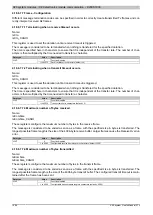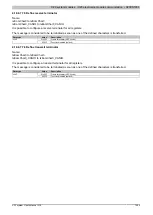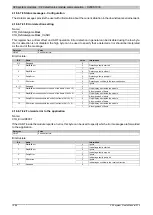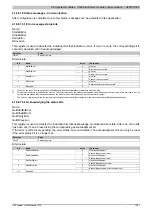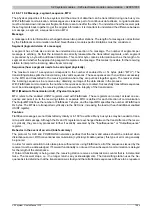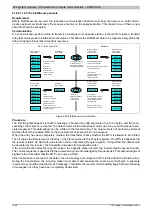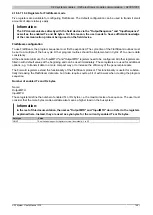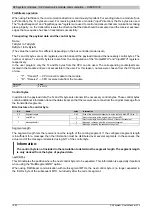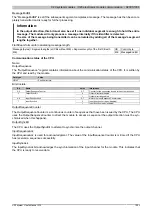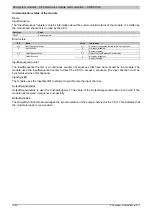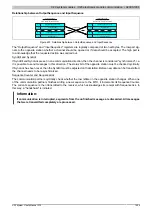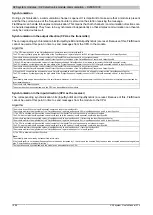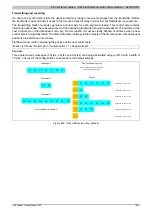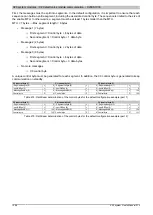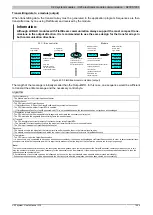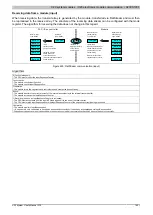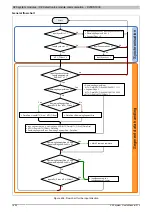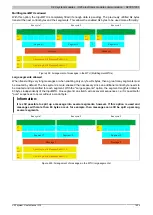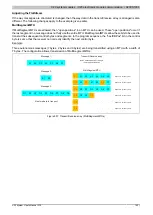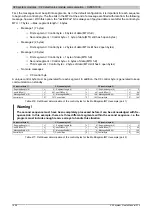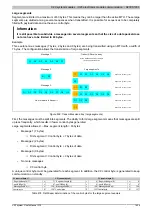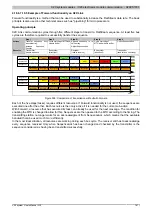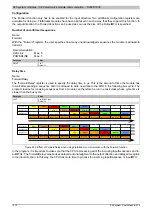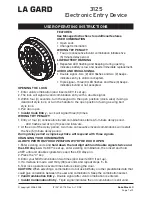
X20 system modules • X20 electronics module communication • X20CS1030
X20 system User's Manual 3.10
1597
Transmitting and receiving
If a channel is synchronized, then the opposite station is ready to receive messages from the transmitter. Before
the transmitter can send data, it needs to first create a transmit array in order to meet FlatStream requirements.
The transmitting station must also generate a control byte for each segment created. This control byte contains
information about how the subsequent part of the data being transmitted should be processed. The position of the
next control byte in the data stream can vary. For this reason, it must be clearly defined at all times when a new
control byte is being transmitted. The first control byte is always in the first byte of the first sequence. All subsequent
positions are determined recursively.
FlatStream formula for calculating the position of the next control byte:
Position (of the next control byte) = Current po 1 + Segment length
Example
Three autonomous messages (7 bytes, 2 bytes and 9 bytes) are being transmitted using an MTU with a width of
7 bytes. The rest of the configuration corresponds to the default settings.
Message 1:
A1
A2
A3
A4
A5
A6
A7
B1
B2
D1
D2
D3
D4
D5
D6
D7
D8
No more data to transmit
-
-
...
-
Message 2:
Message 3:
Sequence for bus cycle 1
Sequence for bus cycle 2
Sequence for bus cycle 3
Sequence for bus cycle 4
Sequence for bus cycle 5
Sequence for bus cycle 6
B1
B2
A2
A3
A4
C2
A1
A7
A5
A6
C3
D1
D2
D3
D4
D5
D6
D7
D8
-
-
-
-
C4
-
-
C5
-
C1
-
-
-
-
-
-
-
-
C0
-
-
Default
-
D9
D9
Transmit/Receive array
With 7 USINT elements according to
the configurable MTU size
Figure 492: Transmit/Receive array (default)
Summary of Contents for X20 System
Page 2: ......


